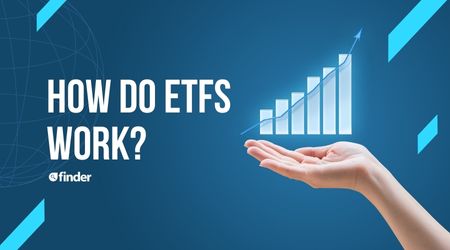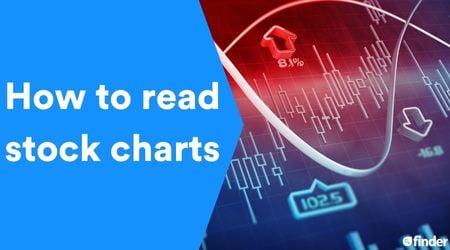One of the most popular and practical research tools for traders is the stock screener. But is a paid subscription worth it? It depends on your level of trading experience and how often you trade.
What are stock screeners?
A stock screener is a research tool that helps investors find stocks that match their search criteria. Investors can apply many filters to narrow their investment options. Common filters include stock price, market capitalization, price-to-earnings ratio, dividend yield, average volume and average return on investment.
The number and complexity of filters vary by stock screener. Some online trading platforms are equipped with screeners, but investors can access stock screeners through free or paid third-party providers available online or as desktop applications.
While you don’t execute trades through a stock screener, it helps you identify stocks to add to your portfolio. The benefit of using the stock screener of an online trading platform is that you can conduct your research and trades in the same place — but not all trading platforms offer them. And even if your platform does offer one, it can be worthwhile to explore screeners from third-party providers, as they’re typically quite well-equipped.
How do I use a stock screener?
To use a screener, choose the filters you want to apply and click to run the screener.
Here’s a rundown of the basic filters you’re likely to encounter:
- Market. Many stock screeners available in the US default to the United States, but select any country to view stocks in Canada and other countries.
- Exchange. Once you select your market, specify which stock exchange you’re interested in. Look at one exchange at a time — like the Nasdaq — or view all exchanges available in your market.
- Sectors and industries. Select the market sectors and industries you want to invest in. The more sectors you add, the more industries you have to choose from.
- Market capitalization. Filter stocks by companies with small-, mid- or large-market caps. Startups usually offer small-market caps and well-established brands offer large-cap stocks. Some stock screeners offer market capitalization categories you can select, while others offer sliding scales or calculators you can use to enter specific value parameters.
- Price. How much are you willing to pay for a single share? Set price limits to find stocks that fall within your budget.
- Change. Expressed both numerically and as a percentage, change is a measurement of the stock’s current price against the last trade of the previous day. This gives investors an idea of the direction the stock is moving and by how much.
Most stock screeners come with basic filters for buy-and-hold investors. But day traders and swing traders may benefit from more advanced screeners with financial and technical indicators to help identify stocks in play.
Free stock screeners
Free stock screeners are well suited to new investors. While typically not as sophisticated as their paid counterparts, they come equipped with all the essential filters a beginner needs to narrow down their investment options.
Beyond offering limited filters, some free stock screeners don’t offer real-time data — a potential dealbreaker for day traders who capitalize on time-sensitive market shifts.
If you’re interested in exploring the market without the commitment of a monthly premium, consider the following free stock screeners:
- TMX Money. The TMX Group, which owns the Toronto Stock Exchange, offers a free stock screener on its website. While you can set your own filters to find stocks you’re looking for, you can also use preset filters to quickly find companies based on market cap, sales revenue, trading volume, strong forecasted growth and more.
- Investing.com. The free stock screener on investing.com gives you access to data from Canada’s most popular exchanges including the TSX, NEO and CSE. There are many filters available, and you can even access basic fundamental analysis, technical analysis and performance data for individual stocks.
- Barchart. A free membership with this platform comes with access to a stock screener, charts, historical data, watch lists and fundamental analysis tools. Its screener is capable of filtering stocks, ETFs, options, commodities and mutual funds — an impressive lineup for a free screener. But members may be frustrated with the banner ads and pop-ups that clutter the free version.
- Finviz. This is one of the most popular free stock screeners on the market. With a special focus on US markets, it comes equipped with an array of fundamental, technical and descriptive filters. Its biggest drawback? Delays of up to five minutes on quotes, charts, maps and groups. Investors looking for real-time data will need to bump up to Finviz Premium.
- Stock Rover. This platform’s free screener specializes in North American securities with a database of over 8,500 stocks and access to data on 4,000 ETFs and 40,000 mutual funds. It’s equipped with analyst ratings, market news, earnings calendars, portfolio management tools and over 150 filters.
- TeleTrader. For the derivatives-focused investor, TeleTrader’s free-to-use desktop screener offers professional analysis tools, interactive charting and a real-time scanner. A mobile version of the software is available for both Android and iOS.
- TradingView. Investors gush over this screener’s simple navigation and custom watchlists. While there are multiple premium tiers to choose from, the free version of the software offers many of the same features, but with fewer indicators, no extended hours trading data and slower data flow.
- Yahoo Finance. Take advantage of this platform’s comprehensive list of prebuilt screeners or build and save your own. Heatmaps are available alongside real-time quotes and streaming data.
- Zacks. This investment research firm’s free stock screener is impressively robust, allowing investors to specify exactly what they’re looking for with customizable values and ranges. Save search criteria for return visits and export screener data to a spreadsheet to perform a closer analysis.
Paid stock screeners
Paying a premium for a stock screener may be worthwhile if there are specific search criteria you’d like to apply that you can’t access through a free screener. And unlike many of the free screeners, paid stock screeners typically offer data in real-time — which may be important for traders executing advanced strategies, like day trading.
Many free screeners available offer premium tiers of service with a greater range of indicators. Whether or not the added cost is a worthwhile investment depends on your trading strategy and experience:
- Barchart Premier. A premium subscription to Barchart starts at USD $29.95 monthly and adds a host of benefits to its free screener, including an ad-free layout, personalized chart settings, advanced options screeners, historical data, top stock picks, grid charts, end-of-day reports and advanced real-time price alerts.
- Benzinga Pro. Investors interested in this comprehensive stock screener need to be prepared to pay. The Basic plan starts at USD $99 monthly and includes Nasdaq-delayed quotes, watchlist alerts, newsfeed access, a calendar suite and a wide range of filters, including float, margins and simple moving averages.
- Finviz Elite. A Finviz Elite subscription starts at USD $24.96 monthly and includes all the tools and functionality of its free screener, plus real-time and extended hours market data, advanced charts, customizable filters, statistics view, data exports and up to 100 screener presets.
- Stock Rover. Stock Rover builds on the tools of its free screener with real-time text and email alerts, brokerage integrations, portfolio and watchlist tracking, over 260 indicators and up to five years of historical stock data. Paid plans start at USD $7.99 monthly.
- Trade Ideas. Demo Trade Ideas’ screening and charting tools for free, but be prepared for an ongoing fee of at least USD $118 monthly to continue to access the platform. It’s the priciest screener on this list, but the software is augmented by an artificial intelligence tool designed to analyze thousands of trading scenarios to suggest trading opportunities with strong upside potential.
Stock screening apps
For investors who want to track data on the go, many screeners offer a mobile version of their software. Access these apps on your tablet or smartphone, with a scaled-back version of the desktop software. If you’ve paid for the premium version of the software, you may have access to more features and tools in the mobile app, but it depends on the software.
Of the stock screeners listed above, the following offer mobile apps:
- Investing.com
- Barchart
- Benzinga Pro
- TeleTrader
- TradingView
- Yahoo Finance
- Zacks
Online trading platform stock screeners
Most online trading platforms provide research and analysis tools for their investors. While the depth and breadth of these tools vary between platforms, many brokerages are equipped with stock screeners, including Qtrade, Scotia iTRADE and CIBC Investor’s Edge.
If online trading platforms offer stock screeners, why go to the hassle of signing up to access third-party software? Well, not all trading platforms offer them. And the ones that do may not offer screeners that have what you need.
Find out if a stock screener is included in your brokerage’s research and analysis tools. If not, explore your options. Many traders rely on third-party software to perform research and use their trading platform exclusively to execute trades.
How to choose a stock screener
Before you sign up for a stock screener, consider:
- Cost. Experienced traders may view the premium for more sophisticated research tools as an investment, but if you’re new to the market, a free screener may be more than enough to satisfy your needs.
- Ease of use. Rely on feedback from other traders to find out how intuitive the software is before you sign up, especially if you’re still learning about indicators and filters.
- Real-time data. Day traders rely on up-to-the-minute information, while buy-and-hold investors may be more interested in long-term trends. Most stock screeners charge a premium for real-time data, so weigh this added cost against your trading strategy.
- Investment amount. If you plan to access a stock screener through an online trading platform, keep an eye out for minimums required to open a brokerage account.
Alternative ways to choose stocks
Stock screeners are an efficient way to identify ideal stocks for your portfolio. But there are other ways to narrow your investment options as well.
- Fundamental analysis. This type of research involves reviewing quantitative and qualitative data points to assess a company’s performance, including assets, profit margins, balance sheets, dividends, ratios and company news.
- Technical analysis. This type of research relies on the use of charting software and the application of technical indicators to identify patterns in a stock’s price. Data is viewed as a 2D graph and the technical indicators you use will depend on your trading strategy.
- Forums and investment groups. Beyond fundamental and technical analysis, you can also rely on financial news, forums and investment groups to identify investment opportunities.
There’s no one size fits all approach when it comes to conducting investment research. Your best bet is to rely on a combination of these research tools to identify the right assets for your portfolio.
Bottom line
Stock screeners come in many shapes and sizes, with both free and paid versions designed to cater to new and advanced traders. The right research tool for your portfolio depends on your trading strategy and investment goals. Compare your brokerage account options across platforms to find the account that best meets your needs.
Frequently asked questions
More on investing

What are the best stocks for beginners with little money to invest?
Want to dive into investing but don’t have much to spend? Take a look at these types of stocks.
Read more…
Meme stocks: What they are and examples of popular stocks
Meme stocks can produce large gains in short periods, but the stocks are volatile.
Read more…
How do ETFs work?
Your guide to how ETFs work and whether this type of investment is right for you.
Read more…
How to read stock charts
Learning how to read stock charts and recognize chart patterns can unlock your success as a trader.
Read more…
What are stocks?
Owning a stock means you own part of a company and can potentially grow your wealth. But there is a risk of loss.
Read more…
How to analyze a stock
Learn how to research stocks and find the right investment opportunities in 4 steps.
Read more…More guides on Finder
-
How to buy Newsmax (NMAX.US) stock in Canada
Everything we know about the Newsmax IPO plus information on how to buy in.
-
Low-cost and commission-free stock trading in Canada
Learn how to choose a free trading platform in Canada to buy and sell stocks.
-
How will tariffs affect the stock market?
Find out how the Trump tariffs will impact the stock market and explore Canadian stocks that may be resilient amidst tariffs.
-
TD Easy Trade review
Use this self-directed trading app to learn the basics of investing with a streamlined app and a number of free trades annually.
-
Best renewable energy stocks
These are the best renewable energy stocks to buy now in Canada.
-
10 best trading platforms and apps in Canada for 2025
Whether you’re a new or experienced investor, these are the best stock trading platforms and apps in Canada.
-
How to invest in the S&P 500 in Canada
Find out how to invest in the S&P 500 in Canada—one of the world’s most popular stock indices—to diversify your portfolio.
-
TD Direct Investing Review
Make quick and easy trades using this reputable online trading platform from TD.
-
RBC Direct Investing review
Here’s what you need to know about the benefits and shortcomings of this Big Bank investment platform.
-
Questrade review
Questrade is a leader among Canadian discount brokerages, but is it right for you? Compare fees, features and alternatives here.
